Explore The Grandeur And Legacy Of The Sun Temple Of Modhera In 2026
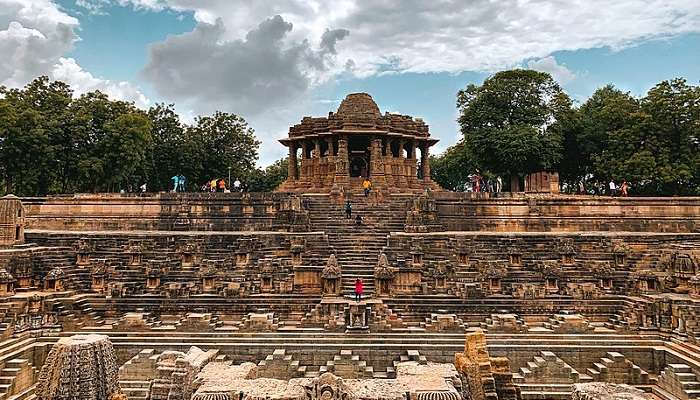
On the banks of the serene Pushpavati River in Gujarat lies this hidden 11th-century Sun Temple of Modhera, beckoning to life in ancient India. This temple, which is dedicated to the Sun God, will fascinate you with its stunning carvings and celestial design. Take a stroll through the grand halls of the temple, along with the sacred tank, and soak in its rich history and beauty. Discover the legends and artistry of Modhera, where every corner tells a story of timeless beauty and spiritual significance. Though it no longer serves as an active place of worship, it is a must-see place for those interested in ancient architecture and religious history.
History Of Sun Temple Of Modhera

The history of the Sun Temple of Modhera dates back to 1026-27 AD when King Bhim I of the Solanki dynasty commissioned its construction. The temple and other nearby temples stand as a superb example of mediaeval Indian architecture and culture.
It is dedicated to Surya, the Sun God, and serves as evidence of the prosperity and artistic excellence of its time. The temple complex has three major components: the main shrine, the assembly hall, and the exquisite stepwell. The stepwell features intricate carvings and designs, highlighting the advanced water management skills and artistic acumen of that era.
Also Read: Nilkanth Dham
Architecture Of Sun Temple Of Modhera
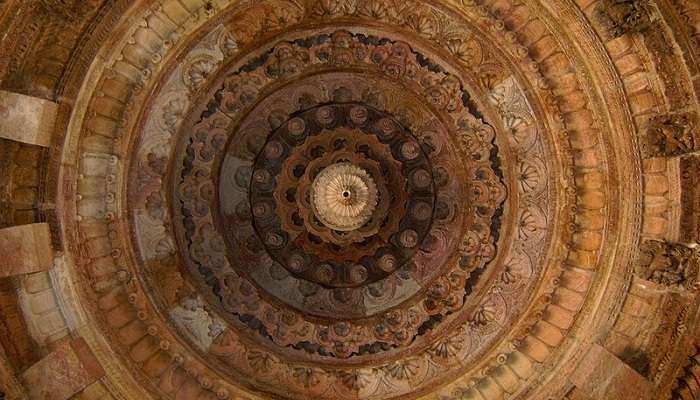
What makes the temple unique is that it is aligned to the North and the South with the sun at the centre. During equinoxes, the sun shines directly on the main deity idol, and this has revealed the knowledge of architects of that kingdom who were astronomy lovers and the Sun god. This celestial connection further cements the temple as being both spiritual and scientific.
Though the temple’s construction can be traced back to centuries, the carving and the architectural marvel continue to draw visitors and arouse the curiosity of archeologists. Modhera Sun Temple is still one of India’s valued treasures. It serves as a memorial of history and still attracts numerous people who come to pay homage to its magnificent construction.
Sun Temple Of Modhera Highlights
The Sun Temple of Modhera is a stunning example of ancient architecture with intricate carvings and a grand stepwell. Visit to appreciate its historical significance, witness the sunlight illuminating the shrine, and enjoy the serene, culturally rich environment.
1. Serene Stepwell
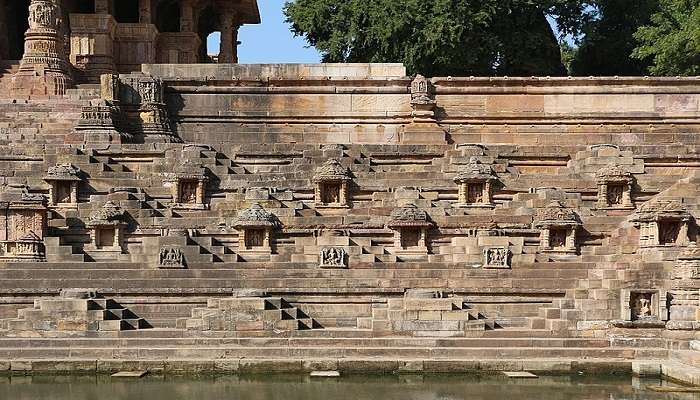
The enclosure has a splendid step well or ‘Vav’, a hydraulic and artistic marvel at this archaeological site. This impressive water tank has geometric carvings and prominent sculptures added to its structure that would signify the high level of expertise of the people behind its construction.
Stepwell served the vital purpose of serving water mainly required in religious functions and as a means of comfortable resting place for the visitors. Even its design, with many stairs descending to the water, is an example of a cubical structure that illustrates both form and purpose. Some of the intricate carvings on the wall of the stepwell and the elegant work done display the skills of the Solanki period, and meticulous steps are taken in water management.
Related Post: Raopura Tower
2. Surya Kund

Surya Kund, the large rectangular tank beside the Sun Temple, forms the major area of the temple complex. Encircled by stairs and sylvan chapels, this was a holy well used in religious ceremonies and observed as an important part of the temple. Surya Kund resembles a temple style and bears the feel of the religious importance of the place.
The steps and stucco parts around it add to the beauty and rather contribute to the construction as a component of the temple. Towards functionalism, this reservoir was essential in serving different needs, but it also aesthetically enhanced the general appearance of the temple, making it a place of worship, meditation, and meditation.
3. Astro Alignment

The Sun Temple of Modhera is positioned scientifically according to the sun’s position during the solar calendar year. The main inner sanctum of the temple is aligned with the directions in a way that on the equinoxes, this façade has the first light on the principal deity, which is Surya, the god of the sun. Out of all these elements, the alignment of the celestial bodies in relation to the structure is the most distinguishable and meaningful element of the whole temple. This light that falls directly on the deity during such time brings out the purpose of the temple as a worshipping centre as well as an astronomical observatory.
Such things as the consideration of the motion of the Sun in its construction speaks volumes on the advancement in astronomy and religious practices, especially the Sun god.
Related Post: Sardar Patel Zoological Park
4. Vibrant Festivals
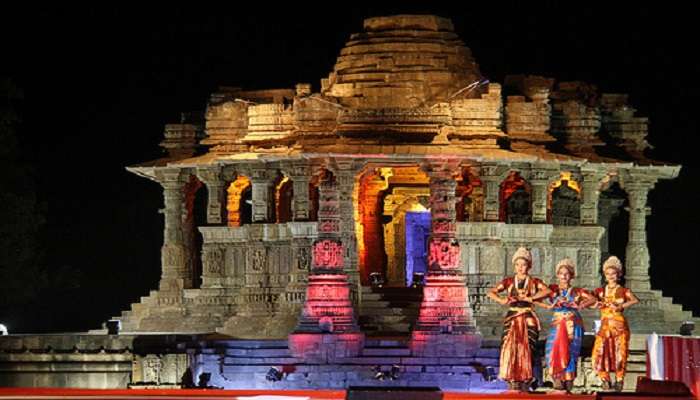
The Sun Temple of Modhera is an active cultural centre and was specifically witnessed during the Modhera Dance Festival. This event presents classical dance and drama on the backdrop of temple architecture.
The festival commemorates the culture and traditions of the state of Gujarat, and performers and audiences come from all over the country. These performances are staged within the auspices of the glowingly beautiful temple architecture; hence, traditional art is infused with history. It also widens the functions and impact of the temple, converting the structure into the cultural and community hub and providing the participants and spectators with an exciting and special event.
Sun Temple Of Modhera Timings And Entrance Fee
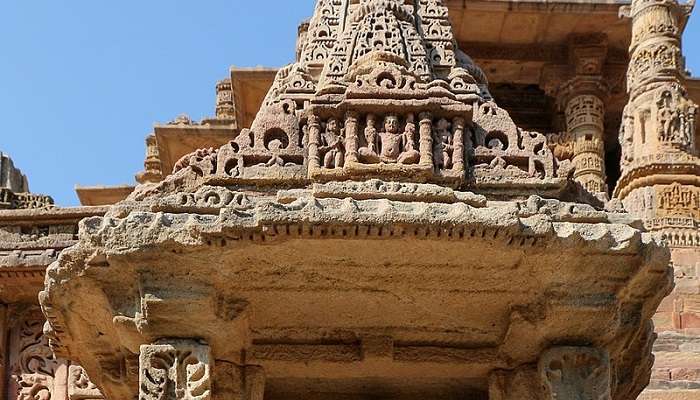
The Sun Temple Modhera is typically open daily from 6:00 AM to 8:00 PM. The entry fee is INR 30 for Indian visitors and INR 500 for foreigners. During the Konark Dance Festival, entry passes are INR 400 per person.
The best time to visit is from October to March, when the weather is pleasant and cool, making exploring the temple complex comfortable. In January, the Modhera Dance Festival adds a unique charm as the temple hosts vibrant cultural performances and festivities.
Related Post: Barton Library
Sun Temple Of Modhera: Explore Nearby Attractions
These nearby attractions offer a mix of historical, cultural, and local experiences close to the Sun Temple of Modhera. Here are some recommended attractions to explore and enrich your travel journey.
1. Kumbhariya Jain Mandir

This is a significant Jain shrine revered for its architectural perfection in Gujarat. This Hindu temple was constructed in the 11th century and is dedicated to Lord Adinatha, the first Tirthankara. The temple is appreciated for its intricate carvings and detailed sculptures that showcase the artistic prowess of the period. The temple has beautiful pillars, elegant paintings, and wall art, and it has pristine looks, which is the symbol of Jain heritage and its believers. This centre is a major spiritual and religious centre that attracts people interested in its history and architectural design.
Timings: 6 AM to 6 PM
Entry fee: None
2. Kankai Mata Temple
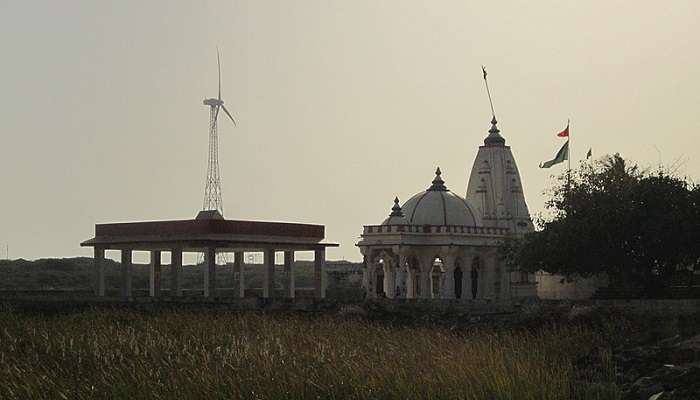
One of the most significant pilgrimage centres in Hinduism, the Kankai Mata Temple is situated near Junagadh in Gujarat and is dedicated to the deity Kankai. Nestled amidst picturesque hills, the temple offers a serene atmosphere ideal for prayer and meditation. Its simple yet elegant architecture, combined with its prominence in various local festivals, makes it a notable cultural and spiritual landmark in the region. It serves as an ideal retreat from the hustle and bustle of urban life, providing a peaceful environment to connect with traditional worship practices.
Timings: 6 AM to 5 PM
Entry fee: None
Related Post: Lehripura Gate
3. Rani Ki Vav

Among the most unique examples of stepwell constructions is Rani ki vav, located in Patan, Gujarat, that was recently included in the list of UNESCO World Heritage Sites. This seven-floor construction was constructed from the material and decorated with carvings and sculptures of gods and myths. The Rani Ki Vav was built as a step well for storing water and as a temple, but it is now widely acclaimed for being an essential piece of architecture. There is no doubt that it is a place that should be included in the list of attractions for historical architecture and cultural values.
Timings: 8:30 AM to 7 PM
Entry fee: INR 40 for Indian citizens and INR 600 for foreigners
4. Sahastralinga Talav
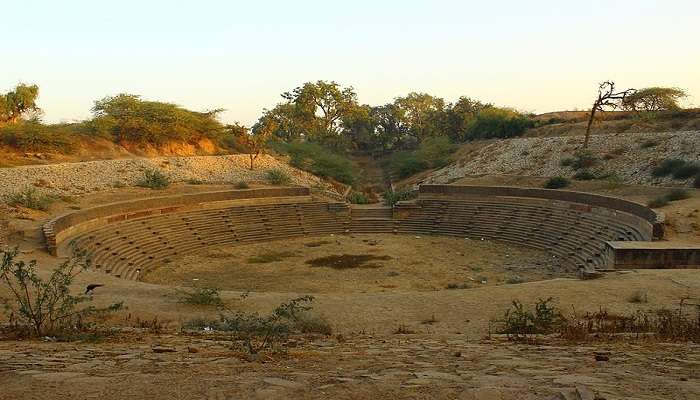
The Sahastralinga Talav water tank is another historic water tank found in Gujarat, in the district of Patan. Famous for its beautiful architectural structure, many engraved Shiva lingams of the Solanki Dynasty are towards the temple’s entrance. This tank was employed for religious ceremonies and as a water supply depot. Further decorated with exquisite engravings and located in a serene compound, it helps the visitor discover the elaborate water control systems and the religious beliefs of the people who once inhabited the Imereti region. A quiet environment takes individuals away from the bustling crowds and gives them a calm environment to enjoy rich Gujarati culture and history.
Timings: 7 AM to 7 PM
Entry fee: None
Related Post: Kayavarohan Temple
How To Reach Sun Temple Of Modhera
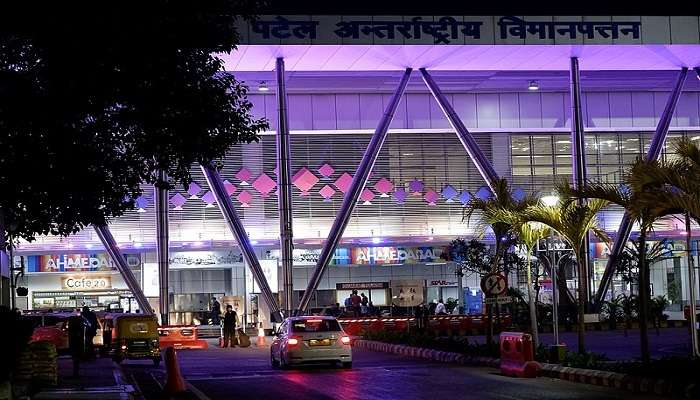
The Sun Temple of Modhera sits in Gujarat’s Mehsana district, India. Here’s how you can get to the temple:
- Nearest Airport: Sardar Vallabhbhai Patel International Airport Ahmedabad, the airport is around 102 km from Modhera. Rent a taxi or hop on a bus to Modhera.
- Nearest Railway Station: Mehsana Junction is about 25 km from Modhera. Take a taxi or catch a local bus to the Sun Temple.
- From Ahmedabad: If you are coming from Ahmedabad, Modhera is about 100 km away. You can drive or get a taxi; it will take you around 2 hours on NH947 and SH41.
- Buses: State-run and private buses also travel from big cities like Ahmedabad and Mehsana to Modhera.
You May Also Like To Read: Ganga Deri
The Sun Temple of Modhera is a typical example of the ancient architecture of India, and it has been built in such a manner that the shape of the Sun and the Temple are the same. This will be a great place that is worthwhile to visit for the view of the rich Indian culture that exists and which everyone will be overcome by. It is time you plan a trip to Gujarat today and witness the Sun Temple’s architectural brilliance, which captures India’s rich historical and cultural essence.
For our editorial codes of conduct and copyright disclaimer, please click here.
Cover Image Credit: Musafir Kanya for Wikipedia
Frequently Asked Questions About Sun Temple Of Modhera
Can visitors get guided tours of the Sun Temple?
Yes, guided tours are available, and it is recommended to hire a local guide to gain deeper insights into the temple’s history, architecture, and significance.
Is there any accommodation available nearby?
There are various hotels and guesthouses in and around Modhera and nearby towns like Mehsana and Patan. Accommodation options range from budget to mid-range.
Is photography allowed at the Sun Temple of Modhera?
Photography is permitted in the outer areas of the temple, but it may not be allowed inside the main shrine.
Are there any specific dress codes or guidelines for visitors?
While there is no strict dress code, it is respectful to wear modest clothing when visiting religious sites. Visitors are also advised to maintain silence and avoid disrupting other visitors.
Are there any local eateries or restaurants near the temple?
Modhera and its surrounding areas have several local eateries and small restaurants where visitors can enjoy traditional Gujarati cuisine and snacks. It’s advisable to try local dishes for an authentic experience.
People Also Read:
Mahakaleshwar Temple Agung Jagatnatha Temple Satya Dharma Temple

With a passion for exploring and travelling to the roads long forgotten, experience the world through enthralling stories and adventures. Join me as I share my experiences at some of the world’s most popular tourist destinations and quench that pestering curiosity with something exciting!











